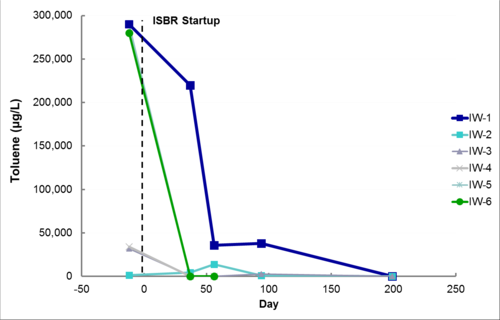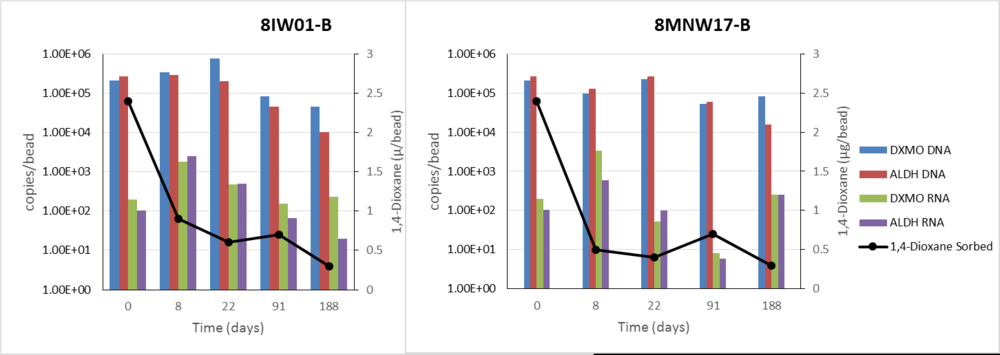BioEnhance In Situ Bio Reactors (ISBRs) are novel in-well bio-remedial systems that produce sustained bio augmentation. The ISBRs are well-documented to induce positive shifts in microbial growth and corresponding chemical reductions. This technology has been used as both a source zone, as well as a barrier remedial strategy.
BioEnhance promotes the growth and transport of indigenous microbial organisms into the surrounding formation to stimulate and increase the biodegradation process. The BioEnhance/ISBR treatment approach relies on the use of Bio-Sep® beads as its medium for microbial growth and support. Bio-Sep® beads provide an incredibly larger amount of surface area (~600 m2/g) that can be readily and rapidly colonized with high densities of microorganisms in groundwater. These microorganisms are subsequently released when the carrying capacity of the beads (> 1.0E+08 cells/bead) is reached. The circulation element through the ISBR, where contaminated groundwater is pulled in from the bottom of the ISBR, passes through the Bio-Sep® medium and exits into the formation allowing for healthy microbes from within the ISBR to migrate into the well column and into the formation beyond the well to further promote the bio-degradation of the residual petroleum hydrocarbons or chlorinated solvents in the aquifer. Thus, the beads can act as a continuous source of degraders for release in the aquifer environment. BioEnhance then treats both groundwater flowing through and around the wellbore as well as bioaugmenting the aquifer with degrading microorganisms that are adapted to the in situ aquifer environment.
In anaerobic applications the ISBR’s enhance reductive dechlorination of chlorinated solvents by culturing and disseminating Dehalococcoides (DHC) and other reductive dechlorinating microbes. These ISBRs provide a continuous supply of microorganisms already adapted to indigenous aquifer conditions to expedite the remedial process.











